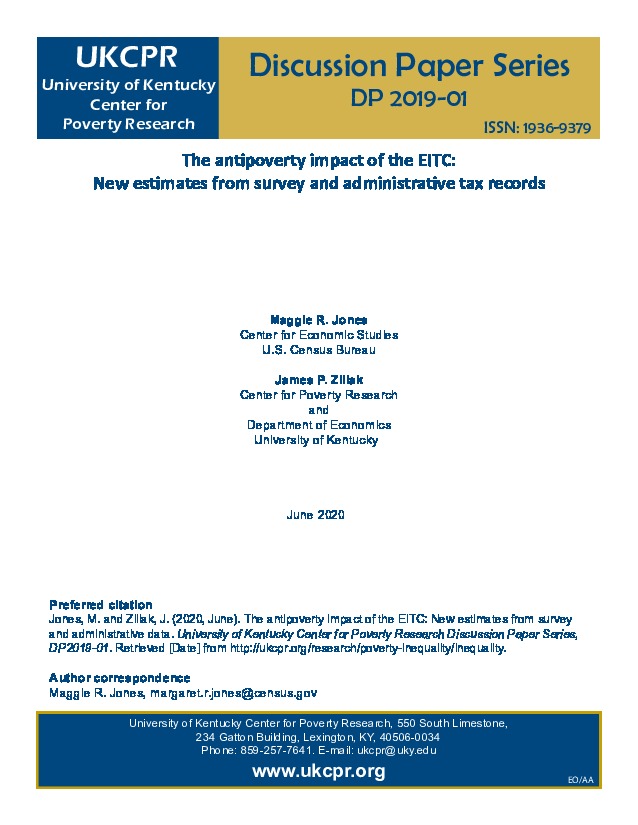This version of DP2019-01 is a June 2020 update. Evaluations of the EITC, including its antipoverty effectiveness, are based on simulated EITC benefits using either the Census Bureau’s tax module or from external tax simulators such as the National Bureau of Economic Research’s TAXSIM or Jon Bakija’s model. Each simulator utilizes model-based assumptions on who is and who is not eligible for the EITC, and conditional on eligibility, assumes that participation is 100 percent. However, recent evidence suggests that take-up of the EITC is considerably less than 100 percent, and thus claims regarding the impact of the program on measures of poverty may be overstated. We use data from the Current Population Survey Annual Social and Economic Supplement (CPS ASEC) linked to IRS tax data on the EITC to compare the distribution of EITC benefits from three tax simulation modules to administrative tax records. We find that significantly more actual EITC payments flow to childless tax units than predicted by the tax simulators, and to those whose family income places then well above official poverty thresholds. However, actual EITC payments appear to be target efficient at the individual tax unit level, whether correctly paid or not. We then compare the antipoverty impact of the EITC across the survey and administrative tax measures of EITC benefits. In 2016, about 3.1 million persons were lifted out of poverty by the EITC, substantially less than prior estimates. Further analysis reveals that the efficacy of the survey tax simulators holds across the entire low-income distribution, and not just at the threshold delineating poverty status. Because these results are contingent on dropping CPS ASEC observations with imputed earnings and incomes, our recommendation is that users of the CPS ASEC drop observations with imputed earnings and at a minimum reweight the sample when conducting distributional research.
Research
PovertyPDF Thumbnail
